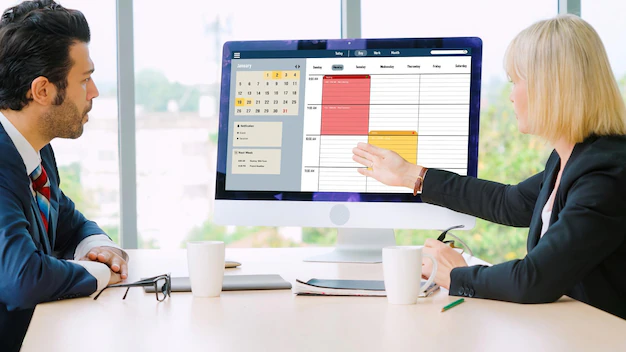What Are The 3 Types Of Timesheets?
by Mony Shah Business Intelligence 09 November 2023

Timesheets have evolved to meet the diverse needs of the workforce. They vary in design and function to accommodate different work patterns, offering businesses the flexibility to track hours as suited to their unique operational structures. In this article today, I will be telling you about the primary types of timesheets.
Traditional Paper Timesheets

Before technology took over, paper timesheets were the standard. Employees would record their start and end times manually, often on a weekly basis. Even though they are less common now, some businesses still use them, particularly those that prefer physical records or operate in areas with limited technological infrastructure.
With paper timesheets, employees fill out their hours by hand, which are later entered into a payroll system by administrative staff. This method is straightforward but can lead to errors due to illegible handwriting or miscalculations. Nonetheless, they’re a simple solution that can be implemented quickly with minimal training.
Despite the shift towards digital, there’s an enduring simplicity to paper timesheets. For small teams or projects where digital tools might be excessive, they can still serve their purpose effectively.
Digital Timesheets: Software And Apps
The move away from paper has led to the adoption of digital timesheets, which provide a more streamlined approach to time tracking. Employees can log their hours using computers or mobile devices, offering a convenient alternative to manual entry.
Out of all types of timesheets, this one often comes with additional features, like the ability to track hours against different projects or tasks. They can offer insights into labor costs and productivity, allowing for better management of resources. They also reduce the chance of human error and the time spent processing timesheets for payroll.
Many digital timesheet tools are available, ranging from basic time tracking to complex project management integrations. For instance, a business could use a simple time clock calculator to determine total work hours from clock-in to clock-out times.
Project-Based Timesheets

Project-based timesheets focus on tracking the time spent on specific tasks or projects. This type is common in industries like law, consulting, and graphic design, where work is often billed per project or task rather than per hour of labor.
Employees using project-based timesheets might record time down to the minute to ensure accurate billing for clients. These timesheets can be either paper or digital, although digital solutions provide more efficiency and accuracy, especially for complex projects with multiple team members.
With project-based timesheets, the ability to see how much time different tasks take can help with future project estimations and workforce planning. They can also reveal insights about process efficiencies and individual performance.
Other Types Of Timesheets
Integrating Timesheets With Payroll Systems
For businesses, the seamless integration of timesheets with payroll systems is paramount for efficient operations. Utilizing digital timesheets that align with payroll software can significantly reduce the time spent on data entry and minimize errors. Automated systems can pull data directly from timesheets into payroll, ensuring employees are paid accurately for their time. This integration helps with compliance as it simplifies the process of adhering to labor laws and tax codes. Moreover, it aids in providing clear audit trails and historical data for financial reporting or inspections.
Integrating timesheets with payroll systems also means real-time tracking of overtime and leave balances, giving both employees and employers up-to-date information. It empowers employees by offering them transparency and immediate access to their work records, fostering trust within the organization.
Timesheet Analytics For Business Insights

The use of analytics in conjunction with timesheets can offer businesses valuable insights into operational efficiency. By analyzing timesheet data, companies can identify trends in employee working hours, pinpoint bottlenecks in workflows, and better manage labor costs. For instance, if timesheet analytics show that certain tasks consistently take longer than anticipated, it might indicate a need for additional training or process improvements.
Furthermore, analytics can also be used for forecasting and capacity planning of different types of timesheets. By understanding peak times and employee workload, businesses can make informed decisions about hiring needs or redistributing resources. This proactive approach can enhance customer satisfaction by ensuring adequate staffing during high-demand periods and avoiding burnout among employees.
Remote Work And Timesheets
The rise of remote work has led to a new dimension in timesheet management. Remote employees require systems that can be accessible from any location at any time, making digital timesheets especially relevant. A robust timesheet system for remote work not only tracks hours worked but also offers features for collaboration and productivity measurement.
For remote teams, managers can utilize timesheets to stay updated on project progress and ensure that team members are working the agreed-upon hours. This becomes important for maintaining project timelines and budgets, as remote work offers more autonomy but also demands higher levels of trust and self-management from employees.
Customizable Timesheets For Unique Business Needs

Every business has unique needs, and timesheets must be adaptable to accommodate these. Customizable timesheet solutions allow businesses to tailor the data fields and reports to their requirements. For example, a marketing agency might need to track time spent on creative work separately from client meetings.
Customizable timesheets can also adapt to various employee roles, with different levels of access or approval workflows to reflect organizational structures. By providing the flexibility to capture the specific data needed, businesses can streamline their operations and focus on strategic tasks instead of administrative work.
Conclusion
The selection of various types of timesheets is a strategic decision that can impact the efficacy of time tracking and the administration of labor within an organization. With various types available, companies can choose solutions that align with their specific requirements.
Read Also:







































































































